#delta the non entity
Photo
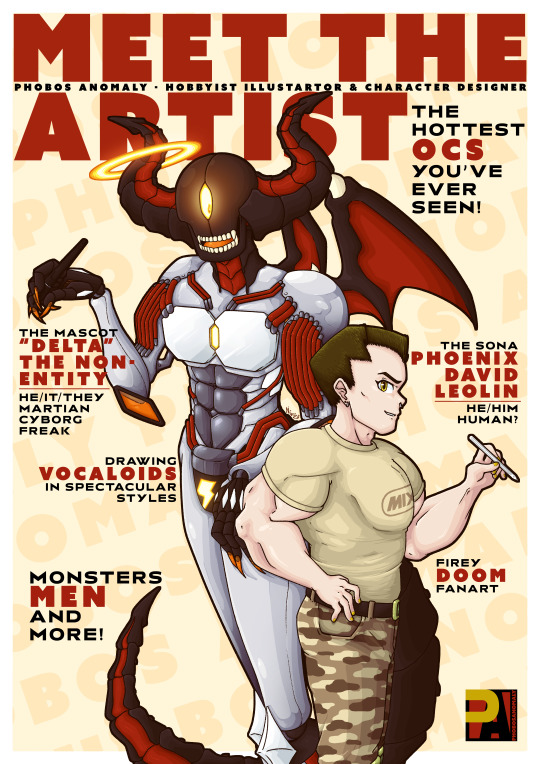
Happy New Year! Did a lil "meet the artist" thing for my return 🪐
I have to slow down my output for this year, but I hope this means I will produce higher quality and more varied work 🧡
For those here from the Blaze, Hello! I’m Phoenix, or Nix for short. I’m a hobbyist artist trying to get his name out there a little. I’ve been making art digitally for around 8 years, out of a love for designing characters and drawing ones from media I adore. I’m very varied, but I specialize in creating strong characters with soft hearts!
I would really appreciate a follow or share if my artwork interests you, ty~✨
#meet the artist#artist on tumblr#artists on tumblr#digital artist#original characters#original character#oc#ocs#phoenix leolin#delta the non entity#demon oc#cyborg oc
13 notes
·
View notes
Text
Most books on the Bengal delta begin by describing it as “riverine,” [...] the land is the product of fluvial action [...]. [I]n thinking about Bengal, one tends to imagine the ricepaddy fields [...]. It was not so all the time; Bengal was never really a land of farming [...]. Traveling through Bengal in the eighteenth century, the French traveler Orme saw a highly sophisticated water-based economy - the blessing of rivers - irrigated [...] by the monsoon rains and annual flooding. [...] The rivers were not just channels of water; they carried a thriving trade, transporting people and goods from one part of the delta to another. Today, Bengal is generally seen as comprising lush green rice paddies [...]. Rivers are often presented as causing immense grief [through seasonal flooding] [...]. Clearly, there is a mismatch here. [...] How (and when) did Bengal’s social milieu transform from water-based to land-based? [...] Bengal’s essential character as a fluid landscape was changed during the colonial times through legal interventions that were aimed at stabilizing lands and waters, at creating permanent boundaries between them, and at privileging land over water, in a land of shifting river courses, inundated irrigation, and river-based life.
Such a separation of land and water was made possible not just by physical constructions but first and foremost by engineering a legal framework that gradually entered the popular vocabulary. [...] BADA, which stands for the Bengal Alluvion and Diluvion Act, [was] a law passed by the colonial British rulers in 1825, following the Permanent Settlement of 1793. [...] The environment of Bengal can be described as hybrid, where the demarcation between land and water is neither well-defined nor permanent. Nature here represents a borderless world, or at best one in which borders are not fixed lines on the ground demarcating a territory, but are negotiated spaces or zones. Such “[...] spaces” comprise “not [only] lines of separation but zones of interaction…transformation, transgression, and possibility” (Howitt 2001, 240).
---
Current boundaries of land and water are as much products of history as nature and the colonial rule of Bengal played a key role in changing the ideas and valuations of both. [...] The debate on what constituted productive and unproductive uses of land preceded the application of English property law not only to establish permanent zamindari (a common term for the system of landlordism) settlement of land tenure in India, but also to valorize land in what had essentially been a land-water hybrid environment. The colonial land revenue system, by seeing land as more productive (being able to yield revenue) and useful, began the long historical process of branding the rivers of Bengal as uncivil and in need of control. [...] The problem with deltaic land is its non-permanent nature, as silt is stored by rivers: rivers do not always flow along a certain route [...] The laws that the colonial British brought to Bengal, however, were founded upon the thinking of land as being fixed in place. [...]
---
Experiments to fine-tune the land-based economy began in 1760 when Bengal, and its ceded territories, came under the East India Company rule. [...] To entrench the system, the Permanent Settlement of 1793 created zamindars (or landlords) “in perpetuity” - meaning for good. The system was aimed at reducing the complexities of revenue collection due to erratically shifting lands and unpredictable harvests in a monsoon-dependent area [...]. Alarmed at the possibility of dismemberment of their estates, the zamindars decided to bind tenants to the same conditions to which they themselves were bound by the colonial government, and one of their actions was to create patni tenures or perpetual leases. [...]
It also meant that the right to collect rent from the tenants, often through the use of force, devolved to the lower layers, making the upper-layer zamindars more of a juridical rather than a real social entity in the eyes of the peasants. The patnidars, finding how much trouble this arrangement took off their own back, created dar-patnis or patnis of the second degree [...]. The dar-patnis created se-patnis or patnis of the third degree. The East India Company, therefore, had to legalize, through Regulation VIII of 1819, the creation of such formations, thus giving a de jure recognition post facto [...].
The regulation, although innocuous and simple, was of great historical potency: it became the key that unlocked the door to environmental and socio-economic changes of unparalleled magnitude. From a riverine community, within a hundred years, Bengal was transformed into a land-based community. [...]
---
The meaning of property also changed as a result of this law: the cultivators began to lose the right to occupy the land that they had enjoyed since ancient times because the colonial British had enumerated the characteristics of the zamindari property as an absolute right of proprietorship in the soil [...].
[T]he Company then began to contemplate the problematic issue of legalizing the fictional entities of chars [...]. The law that was created for this purpose -- and still rules the rights of ownership of charlands -- is the Bengal Alluvion and Diluvion Regulation Act (BADA) of 1825. [...] BADA was meant to establish a set of rules to guide the courts to determine the claims to land “gained by alluvion” or accretion, and the resurfaced land previously lost by diluvion or erosion. Even if one takes it for granted that chars are technically non-land in the sense that they exist within river banks, the difficulty remains that when a piece of land is lost to bank erosion, it may not arise in exactly the same location or arise at all within the foreseeable future. This means the owner has no certainty that they will get it back when it resurfaces or when another char rises nearby. [...] Thus, the key to establishing land rights in the court of law remained the payment of rent, even on diluviated land. [...] Such a rule will, however, not be applicable if a river suddenly changes its course and separates a considerable piece of land from one to join it with another farm, but without destroying the identity of the land so removed -- thus preventing legal recognition. New accretions in large navigable rivers would be the property of the state [...].
---
All text above by: Kuntala Lahiri-Dutt. “Commodified Land, Dangerous Water: Colonial Perceptions of Riverine Bengal.” In: “Asian Environments: Connections across Borders, Landscapes, and Times.” Edited by Ursula Munster, Shiho Satsuka, and Gunnel Cederlof. RCC Perspectives, no. 3, 17-22. 2014. [Bold emphasis and some paragraph breaks/contractions added by me.]
#summary of how britain took over bengal#calcutta#sundarbans#abolition#ecology#imperial#colonial#mangroves#tidalectics#archipelagic thinking#wetlands#ecologies#carceral geography#debt and debt colonies#caribbean#indigenous
256 notes
·
View notes
Text
literally the best truth i can impart is that online creates a delta of separation so fantastically vast that you literally have to treat people you don't know at all as non-entities. If you're friends online, awesome. it's awesome to have online friends. if it's just some comment or a post from someone you don't know you gotta train yourself to go "my access to this person as a whole entity is so fucking limited that i cannot even begin to ascribe any humanity to it. i'm basically talking to a line of text."
20 notes
·
View notes
Text
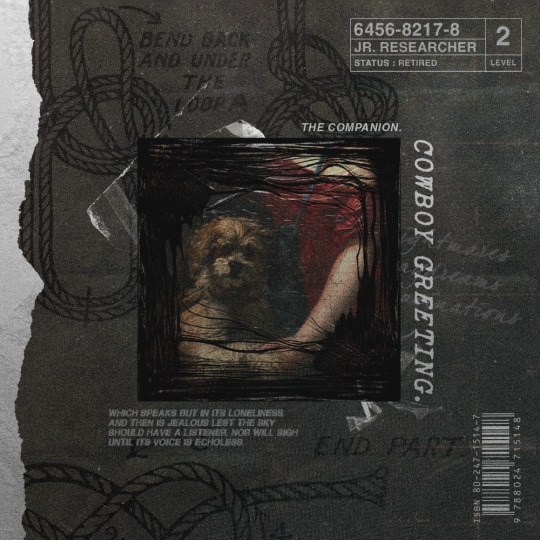
EMPLOYEE ID 6456-8217-8; 𝐶𝑂𝑊𝐵𝑂𝑌 𝐺𝑅𝐸𝐸𝑇𝐼𝑁𝐺.
𝐍𝐚𝐦𝐞 Seth Hiroshi Masters
𝐀𝐠𝐞 38
𝐆𝐞𝐧𝐝𝐞𝐫/𝐏𝐫𝐨𝐧𝐨𝐮𝐧𝐬 cis man, he/him
𝐅𝐚𝐜𝐞𝐜𝐥𝐚𝐢𝐦 Will Sharpe
𝐒𝐭𝐚𝐭𝐮𝐬 retired

PROFILE.
Unassuming and reserved, [𝐶𝑂𝑊𝐵𝑂𝑌 𝐺𝑅𝐸𝐸𝑇𝐼𝑁𝐺]’s record of service can, at best, be described as consistent. However, the origins of this operative’s connection to the Foundation are strikingly non-standard. As a child they survived not only direct exposure to an apocalyptic Apollyon-Class SCP that manifested at their hometown [DATA EXPUNGED], but also the contingency plan enacted to avoid a K-Class Scenario.
Despite administration of Class B Amnestics to target [𝐶𝑂𝑊𝐵𝑂𝑌 𝐺𝑅𝐸𝐸𝑇𝐼𝑁𝐺]’s memories regarding the real reason that half the population of [DATA EXPUNGED] disappeared overnight, medical reports indicate the operative has persistent dreams involving the incident. So it was quite serendipitous that [𝐶𝑂𝑊𝐵𝑂𝑌 𝐺𝑅𝐸𝐸𝑇𝐼𝑁𝐺] ended up working for the Foundation in adulthood. Whether this result can be chalked up to coincidence or this operative’s connection to researcher [𝑇𝑅𝐸𝐸 𝐻𝑈𝐺𝐺𝐸𝑅] is yet to be seen. In any case, the Ethics Committee is certain that their participation in MTF Chi-00 will lead to a future breakthrough on synthetic amnestics, and will be supervising their growth within the team.
— Internal Memo from the Ethics Committee.
LAST ASSIGNMENT.
JR. RESEARCHER; Site-169, Anomalous Entity Engagement Division, studying behavioral interventions in improving anomaly cooperation. Former site evaluator, worked with Rho-7, Nu-3, Delta-4, and Lambda-12.

INTERRELATIONS OF NOTE.
𝑂𝐿𝐷 𝑆𝑃𝑂𝑅𝑇. In contrast to you, they seem able to remain calm under any sort of pressure. It’s admirable and comforting. But only kind of, because it’s hard not to compare yourself to them. Insecurities about whether or not you should be here are starting to spill over and taint the work you’re doing. Thankfully, it seems that 𝑂𝐿𝐷 𝑆𝑃𝑂𝑅𝑇 has noticed and has decided to watch over you. Or are they merely just watching?
𝑇𝑅𝐸𝐸 𝐻𝑈𝐺𝐺𝐸𝑅. You’d follow them to hell and back, but… you’re starting to think this latest venture might have been a mistake — for both of you. You’re hoping you’re wrong and it’s just stress over the new position. Plus, you can tell how excited 𝑇𝑅𝐸𝐸 𝐻𝑈𝐺𝐺𝐸𝑅 is by all this. But like with everything else, doubts have started to creep in and you’ve have always wondered if they really understand what the purpose of the Foundation is. Still, you’d never leave their side if you have any say about it.
𝐸𝐿𝐸𝑉𝐴𝑇𝑂𝑅 𝑀𝑈𝑆𝐼𝐶. You find yourself in their office on the regular lately. You’re not even sure why, half the time; maybe you just need somebody to talk to. Somebody who doesn’t know you like the back of their hand…. Y’know, maybe it’s time that you moved out of your comfort zone and made new friends. 𝐸𝐿𝐸𝑉𝐴𝑇𝑂𝑅 𝑀𝑈𝑆𝐼𝐶 seems like a good choice in that regard.
7 notes
·
View notes
Text
STAR TREK: PICARD: 3x05: "Imposters": What's up with Jack?
Beware: Season 3 spoilers! If you have not watched the first five episodes of STAR TREK: PICARD season 3, get thee to your streaming device and watch! Then come back for some crazytalk 23-and-me speculating. =)

So! I have some kooky thoughts and theories about Jack Crusher's heritage…
1. PART BORG.

Jean-Loc passed his residual connection to the Borg collective on to his son. When he was a child, he had terrifying nightmares, which were actually visions of disoriented, perhaps crazed & dying Borg, as the Collective disassembled in the years after alternate Janeway's infection of the Borg Queen. Dr. Mom was able to come up with a treatment that rid him of the visions so that he could sleep. Whether she somehow only treated the nightmare symptom or actually learned of and addressed the Borg-y root of the issue, there's no telling yet. Years later, Jack is once again receiving messages and information via this psychic link, originating from a Borg, ex-Borg, or Borg-adjacent entity.
2. PART PAH WRAITH.

At some point before JL's visit to Casperia Prime w BC, a Bajoran tablet came into his possession and was accidentally broken (seen in JL's home in season 2). This released a Pah Wraith which had been imprisoned within. The Pah Wraith possessed JL, but did not assume full conscious control. Instead, realizing that his host was already taking steps toward the PW's own goal, it rode shotgun in JL's mind and body, and let nature take its course. Together with Beverly, JL and the PW conceived the Pah Wraith version of the Prophets' Emissary, a mortal who can commune with the Pah Wraiths and serve as their autonomous agent in the mortal realm.
Red eyes have been seen to be a sign of possession by a Pah Wraith.


Ben Sisko's mother Sarah was fully possessed by a Prophet when she met and married Ben's father Joseph and gave birth to Ben. In Jack's case, the PW possessed JL after he and BC were involved, so the PW did not need to exert active control of JL to bring its progeny into the world.
If Sisko is the Emissary, what is Jack? I have a feeling that he may be the Eschaton or perhaps the Sacrifice or Offering, a being fated to bring about a cataclysm (freeing the PWs and/or trapping/killing the Prophets?), possibly killing himself in the process.

When Seven shot the Changeling wearing Sidney La Forge's form, the Changeling's eyes went red on its death. Not quite the same effect as with Jack's eyes, but I'm gonna say it's close enough for now. To me, that means that at some point a Changeling visited the Fire Caves of Bajor and left with a Pah Wraith passenger, maybe possessor, maybe partner. I haven't decided if PWs would be controlling rogue Changelings (and other non-Changeling hosts?) or are partnered with them. In either case, would every Changeling be partnered with a PW or carry a fraction of a single PW (I don't remember seeing that in PWs or Prophets before), or Sideeye/Sidney was the only or one of only a few Changeling's possessed by a PW.
PWs and Prophets appear to their faithful and agents as familiar faces and voices. We are hearing the PWs call to Jack in his visions in the voices of people he knows. Perhaps JL has translated enough of the tablet's inscription to know or say the right thing to free his son from a dark destiny. Or—Beverly's influence, guidance, and love will prove that nurture can overcome nature, and JC will throw off the fate the PWs planned for him, Hellboy-style.
3. PART 8472.

While pregnant with JC, BC used the genetic modification techniques of Species 8472 to eliminate the genes responsible for Irumodic Syndrome, inherited from JL. These techniques were acquired in an exchange of information between Voyager and the 8472 humanoid mimics in the Delta Quadrant. BC employed 8472's techniques without adjustment, and in doing so—knowingly or not—boosted some of JC's baseline physiological characteristics because the mods included and assumed some of 8472's natural attributes, including a powerful immune system, a very resilient healing factor, and telepathy. JC does not have these attributes at the level of an 8472, but at a high level for a human.

8472s in humanoid form had to learn to sleep, as their original bodies do not need it. This is how JC, as a child and now as an adult, can go for days without sleeping. His visions are a consequence of some entity or entities tuning into his latent telepathy. His BOURNE IDENTITY-like fighting prowess is also enabled via telepathy, either by remote control or a psychic "download" of skills.
If this crazytalk turns out to be even close to accurate, I really hope that his vision experiences connect to a conspiracy of warhawk 8472s who are masquerading as (meatier) Changelings in order to frame the Founders for a series of terrorist attacks and plunge Starfleet and perhaps the Alpha Quadrant back into war with the Dominion.
NB. The genetic modification of JC makes him an augment, forbidden and outlawed in the Federation. This is another reason that BC cut herself off from her friends and Starfleet.
4. PART CHANGELING.

While pregnant with JC, BC used the genetic modification techniques of the Founders to eliminate the genes responsible for Irumodic Syndrome, inherited from JL. These techniques were reverse engineered from studies of Founder, Vorta, and Gamma and Alpha Jem'hadar biology. The Founders engineered their follower species and could dial specific physical and mental qualities up and down as desired. Embedded, but perhaps not recognized by Starfleet or BC herself, in the Founders' mod processes are traces of Changeling genetic sequences, the creators' signature on their work. Combined in human DNA, these sequences express themselves in an enhanced immune system and healing factor as well as a psychic connection compatible with Changeling linking.
The psychic connection resulted in JC's childhood nightmares, which BC treated. There's no telling yet if she only treated the nightmare symptom or learned the root cause of the issue, but she is recognizing its return now.
NB. The genetic modification of JC makes him an augment, forbidden and outlawed in the Federation. This is another reason that BC cut herself off from her friends and Starfleet.
5. MIX AND MATCH.

Take some or all of 1 thru 4 and mash them up good. Like, he's part Borg—maybe thanks to Jean-Loc's nanoprobed sex cells, or maybe thanks to actual Borg-rewritten DNA—and an Irumodic Syndrome-free augment! Or—he's part Borg, which is where his visions come from, but also playing host to a Pah Wraith, which is where the voices and ninja skills come from. Try one of your own!

I've had several more notions that I couldn't quite extrapolate into meaningful theories, but maybe some new pieces will fall into place for them in episode 6. If they do, I'll try to work them out in another post.
LLAP…aka…
Keep on keepin' on~
#star trek#picard#star trek picard#season 3#Jack Crusher#Jack#theory#spoilers#changeling#8472#borg#Beverly#Locutus#Jean-Luc#crazytalk#Imposters#pah wraith
7 notes
·
View notes
Text
Everything (I Think) I Know About Shitty Werewolf E-Novels
For context, my facebook ads are fucking flooded with these shitty, 5-a-dime werewolf stories with terrible grammar, plots so cliche that even manhwa writers would roll their eyes at them, and the five-chapter blurbs ending on a stupid unnecessary cliffhanger. I've seen too many of them at this point so now I'm making it everyone else's problem.
All werewolves either live in packs which act more like independent compounds in the woods, or as packless rogues who can be killed off with no remorse because outsiders stinky, I guess.
(Sidenote, they never mention how the werewolf societies function living so isolated, how they haven't been found with modern technology, whether or not they're farming or trading for food, or anything that doesn't involve mystic wolf theocracy.)
Werewolves worship a Moon Goddess. She is important and guides all their decisions, but never actually plays any important part in the story despite being their chief deity and appearing in literally every blurb I've been shown.
Despite having one female god as their only religion, packs are extremely patriarchal, with an Alpha (always male) ruling the pack while his Luna (always female, always the Alpha's mate) does some administrative work or something.
Betas are Second-in-Command and not the Luna, because leadership is a boys-only club, I guess. After them are Deltas and Gammas (Gamma optional).
Werewolves have a "true mate", aka a Soulmate. This is always a source of conflict, and despite being the most existentially terrifying concept imaginable, is treated as good and normal by werewolf society.
Instead of being people who turn into wolves, werewolves are instead more like dualminds, with a Human side and a Wolf side each considered their own separate entity in the same changing body.
Abusing your girlfriend/fiancée/wife is seen as normal, morally acceptable behavior. Whether the author also buys into this belief system varies.
Women are basically property that can fight back. They go with their men and only sometimes get to make decisions.
If you think Tradfems are bad, wait until you see the sexual slavery that goes on in these books! I get that they're written for lonely teenagers who want to get off but don't want actual porn, but seriously, it's disgusting how women are treated in these books.
Everyone is heterosexual because *noises* wolves?
Every single man in these books can and will cheat on his significant other, usually in the cruelest way possible, probably to fuel the revenge fantasy.
Adoption is nonexistent. The only thing people care about is your bloodline. (Actually accurate to real-life wolves, they're not friendly with non-kin)
Every single woman is a jealous bitch (ha) who will stop at nothing to tear every other woman down around her, because female friends feels threatening to your average insecure reader who is terrified that other women will try to steal male attention.
If you've actually read any of these kinds of stories to the end, please tell me what I got wrong and what I tragically got right, I apparently like to suffer.
13 notes
·
View notes
Text
FIELD NOTES 9-30-22
ON LLOIGOR & THE DEMIURGE
------
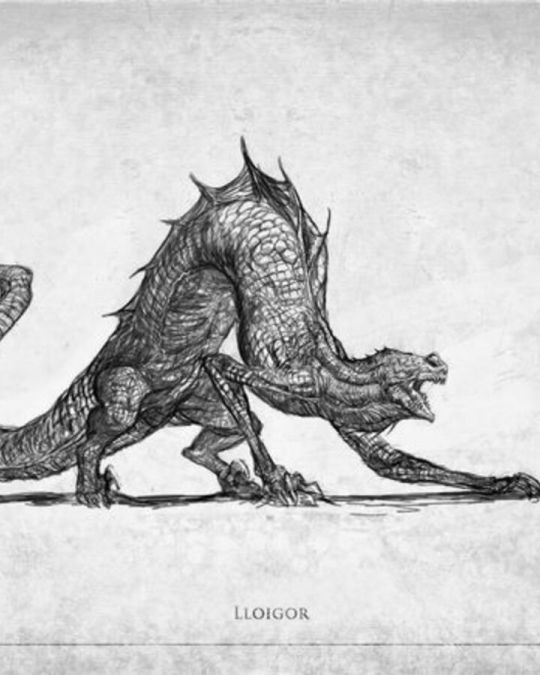

Part of my ongoing ideas on blending Lovecraftian themes and mainstays with modern magical principles and UFOology means looking at one of my favorite historical entities-- The llloigor.
Lloigor have always been these formless parasitic wells of bad psychic vibes and are able to merge into one larger entity as a Lloigor Field. Their ability to manifest as dragon-like physical entities has kind of stuck as how they're represented, but at the end of the day these are just holographic projection on reality using the orgone energy the Lloigor syphoned from living creatures. It takes an immense amount of energy to do and will leave the Lloigor dormant for years after, so I imagine they just have a preferred "optimized" form as a dragon or wyrm when threatened as a sort of battle form.
When I make a campaign I portray Lloigors less as a specific race of reptilian invisible aliens but fragments of a greater parasitic cosmic energy that broke from one original, massive Lloigor Field. Depictions of the Demiurge and Yaboloath originate from this larger being feeding on the suffering of the material world, with many poltergeist hauntings, "demonic" possessions, or other manifestations of negative energy being a fragment of this greater force attempting to rejoin the whole. What Delta Green interprets as the "Lloigor" phenomenon are just one of many forms fragments of the Demiurge Lloigor Field manifests as, along with Goetic demons, southeastern Naga and other malevolent serpent imagery in other cultures.
While gnostic myself I typically omit portraying how this manifests in non-European cultures however, to avoid misrepresenting them or projecting problematic themes where they don't really fit so if you have any insights into how to adapt and represent this more universally please let me know.
2 notes
·
View notes
Text
New McAllen Non-Stops Coming
Learn more about the new flights coming to McAllen
I have not been paid by any entity in any way (financially, benefits) to write the following post. Any airport, airline, lounge, and/or loyalty program policies may have changed since then.
Delta Air Lines is expanding its operations at Austin Bergstrom Airport as it seeks to make the Texas capital city a focus city, adding McAllen to its list of destinations out of Austin, starting April 22,…

View On WordPress
0 notes
Text
A Journey of Positive and Profitable Collaboration with Delta BPO Solutions

Chapter 1: Inception and Ambitions
In the heart of Jharkhand, a small but determined team embarked on a journey to carve a niche in the business process outsourcing (BPO) industry. Armed with a vision and a dedicated team of 15 employees, our story began with aspirations as high as the sky. As we set foot into the challenging world of BPO, little did we know that a game-changing collaboration awaited us.
Chapter 2: Navigating the Initial Challenges
The first few months were a roller-coaster ride. Navigating the complexities of setting up a BPO, we encountered hurdles that tested our resilience. But every challenge was met with unwavering determination. As we honed our processes and rallied our team, we began to see a glimmer of success on the horizon.
Chapter 3: The Turning Point - Enter Delta BPO Solutions
It was at this pivotal moment, a recommendation from a fellow entrepreneur led us to Delta BPO Solutions. Skeptical yet hopeful, we reached out to explore the potential of a collaboration. Little did we anticipate the transformation that was about to unfold.
From the first conversation, it was evident that Delta BPO Solutions was not just another service provider; they were partners invested in our success. Their comprehensive understanding of the industry, coupled with a personalized approach, set the stage for a fruitful collaboration.
Chapter 4: Tailored Solutions and Remarkable Transformation
With Delta BPO Solutions on board, a tailored strategy was crafted to align with our business goals. Their expertise in areas ranging from customer support to data entry proved invaluable. They seamlessly integrated into our operations, leaving us astounded by their efficiency and dedication.
Our team, once stretched thin, now had the freedom to focus on innovation and growth. The burden of non-core functions was lifted, allowing us to redirect resources towards enhancing our services and expanding our client base.
Chapter 5: The Profitable Horizon
As months turned into a year, the impact of our collaboration with Delta BPO Solutions became undeniable. Our profits soared, and our operational efficiency reached new heights. The positive ripple effects were felt not only within our organization but also resonated with our clients.
Delta BPO Solutions had not just provided services; they had become an integral part of our journey. Their commitment to quality and excellence mirrored our own, creating a synergy that was nothing short of remarkable.
Chapter 6: A Transformational Experience
Looking back, the transformation we underwent is nothing short of a testament to the power of collaboration. What started as a modest BPO with 15 employees in Jharkhand has evolved into a thriving enterprise, driven by innovation, efficiency, and profitability.
Delta BPO Solutions proved to be the catalyst that fueled our growth trajectory. Their unwavering support, personalized approach, and commitment to excellence set the standard for what a true partnership should be.
Epilogue: Beyond Boundaries
As we reflect on our journey of positive and profitable collaboration with Delta BPO Solutions, we are filled with gratitude. What began as a small endeavor in Jharkhand has now expanded beyond boundaries, with a client base that spans industries and regions.
Our story serves as an inspiration to fellow entrepreneurs and businesses seeking growth. It highlights the transformative potential of strategic collaborations and the immense value that can be unlocked when two entities share a common goal.
In the grand tapestry of business, Delta BPO Solutions will forever hold a special place in our narrative. They are not just a service provider; they are architects of our success, partners in our journey, and a living testament to the power of positive collaboration.
0 notes
Text
Transforming Perceptions on Over-the-air (OTA) Adoption

While OEMs are still developing such capabilities, certain trends testify why widespread Over-the-air (OTA) Adoption will become the next big thing:
Shift from discrete to domain to central computing architecture: Statistics peg most vehicle architectures will support High-Performance-Computing (HPC)1 by 2030. Also, it is predicted that OEMs will establish in-house capabilities in the fields of application software, functions and services, and semiconductor know-how.2
OTA as a foundational feature of vehicle architecture: With connectivity expected to reach between USD 450-750 Bn by 20303, software-driven vehicles must be updatable for better functioning. OTA’s versatility may transform it into a data pipe for other applications and a potential channel for data monetization/revenue4 for OEMs.
Non-uniform OTA adoption rates: All OEMs today are at different stages of the OTA adoption curve but unstinted focus remains on domain and central computing.
Such trends point to considerable advantages for all stakeholders when OTA updates get implemented:
Though OTA accelerates building of software-driven vehicles, the market is set to grow to 79% of vehicles sold worldwide by 20255 and is compliant with cybersecurity regulations, leverages changing architecture and innovative business models, the rate of adoption is slow.
This is attributed to prevalent deep-seated notions:
Common notions on OTA adoption
Difficulty in sourcing end-to-end OTA solution: OTA has multiple components – Cloud, Onboard vehicle, Software integration, Services – sourced from different suppliers rather than one comprehensive solution from a single entity.
Challenges to integration due to multiple partners: This is especially true where components differ in quality, or spare parts may not be easily available but can be resolved by experienced and expert partners.
OTA updates are regular features for automobiles: OTA is now at the core of vehicle architecture with other elements dependent on it, and must be dealt with accordingly with relevant domain knowledge.
Lack of robust partnerships to implement vehicle architecture: Lopsided understanding of vehicle architecture and the domain can be overcome by partnering with a strong and experienced transformation collaborator6.
Highlights of KPIT’s OTA solution:
On-board technology comprises the Software Download Manager, OTA Orchestrator, Update Configuration Manager, DPDU Library and the Bootloader.
Cloud-side focus on Campaign Management and Software Dependency Management to capture all hardware & software dependencies and their versions.
Proven capabilities to perform software, firmware, content and application updates, while supporting comprehensive Delta and Dual Bank/In place updates for non-POSIX/small ECUs. Robust Bootloader to undertake background updates for Body, Engine and Chassis Control Modules.
Expertise across core architecture consulting, software integration services, platform customization, integration and end-to-end OTA testing.
Read more information about this topic on the article published on KPIT Technologies, click the link to read more:
#KPIT Technologies#software-driven vehicles#Transforming Perceptions on Over-the-air (OTA) Adopti#Over-the-air (OTA)
0 notes
Text

weird lil trick or treaters
seasonal icon versions 🪐🪖


#phoenix leolin#delta the non entity#anomaly ocs#oc#original characters#halloween#demon oc#demon#doom oc
10 notes
·
View notes
Text
TMS vs CES vs TES and How Do They Compare?


Transcranial Electrotherapy Stimulation (TES) and Clinical Electrostimulation Systems (CES) are non-invasive neuromodulation techniques that are used to treat various neurological disorders. These techniques involve using electrodes to deliver tiny electrical current to brain regions, which can affect behavior. Both of these techniques can be used alone or in combination with other forms of therapy.
TMS and TES are often combined with other types of directed training, such as cognitive or speech therapies.
TES has been in use for many decades. A variety of devices are available on the market, each with a different set of characteristics. However, these devices all deliver tiny electrical currents through electrodes positioned on earlobes or the top of the forehead. The intensity of these currents is typically between 10 and 20 mA. The duration of stimulation is generally 10 to 20 minutes.
During the past few decades, tES approaches have evolved. Some devices were developed to treat pain and depression, while others were developed to address specific medical needs. Today, there are several types of tES, including transcranial alternating current stimulation, transcranial random noise stimulation, and transcranial direct current stimulation. Although some of these technologies were already in use at the time of their invention, they are now being studied and incorporated into new approaches.
Historically, the effects of tES have been clinical. These effects include reducing chronic pain, improving memory during sleep, and relieving anxiety and depression. However, the results from tES treatment may not always be expected. For example, patients who have a history of drug abuse, such as alcohol or opioid addictions, may not experience a desired behavioral change. In addition, tES is not guaranteed to be safe.
tES is currently governed by the FDA.
Currently, tES is regulated by the FDA, which seeks marketing approval for commercial entities. Because the regulatory standards for these types of devices are not yet clearly defined, there is uncertainty regarding their safety. This can cause confusion and risk, which can limit the number of available patients and the type of treatments they can receive. Nevertheless, FDA is hesitant to ban these devices.
Contemporary tES approaches have also evolved, but are still rooted in the original tES principles. Most current CES devices are marketed as offering a novel dose. This is because the tES device outputs differ, depending on the type of tES. One type of tES uses a complex mix of waves, including sinusoidal, delta, and gamma waves. Another type of tES, such as transcranial alternating current stimulation, uses a simple sinusoidal current.
There are currently computational “forward” models for tES that help physicians and scientists to predict the brain regions to be stimulated when a certain montage is chosen. With this information, they can more efficiently select a montage that will have the best potential for therapeutic effects.
Disclaimer: This is not professional advice and is simply an answer to a question and that if professional advice is sought, contact a licensed practitioner, or doctor in the appropriate administration.
Seek Professional Help
When you need a help to cure your anxiety, Contact CES Relief to get a prescription from a professional licensed practitioner.
Cranial Electrotherapy Stimulation (CES) Device is a safe, painless microcurrent treatment scientifically proven to treat anxiety and insomnia in children, teenagers, and adults alike.
CES Relief
1875 N Lakes Place
Meridian, ID 83646
(208)846–8448
CES Relief Website
Google Map — CesRelief
0 notes
Text
Putting all of my Sly fics into one semi-unified timeline because I got bored
1868-1899
William "Tennessee Kid" Cooper is active as an outlaw across various states and territories within the continental United States
197x
"Cunning" Conner Cooper first meets Beatrice "Trixie" Fletcher, during a(n attempted) heist in Milan
1981
Carmelita Montoya Fox born to Zoe Fox Hayek and Antonio Montoya Vulpín
1984
Slytunkhamen "Sly" Cooper born to Conner Cooper and Trixie Cooper, née Fletcher. Murray the hippo born to unknown parents. Bentley the turtle born in a swamp.
1992
Cooper family home/farm/safehouse attacked by Fiendish Five, resulting in two deaths and an orphaning. Sly, Bentley and Murray first meet
2002
Sly and his friends defeat the Fiendish Five. Subsequently, he visits his parents' graves
Intertwined Tails: Carmelita confronts a grey-furred, ringtailed security guard
2002 (Omega Timeline)
Sly perishes while fighting Clockwerk.
September 23rd, 2003
Carmelita successfully apprehends Sly, albeit briefly, and learns a surprising personal fact for the first time
2003 (Gamma Timeline)
Inspector S. Cooper unsuccessfully attempts to apprehend Carmelita, and learns nothing
2004
Sly and his friends defeat the Klaww Gang, but temporarily disband in the aftermath
Unbeknownst to her 'colleagues', Neyla obtains a sample of Sly's fur from the Contessa's prison, and sets an unusual contingency plan into motion
IT: Sly helps Carmelita escape from Prague. Later, they discuss things during a post-adventure helicopter ride
2005
Sly and his friends defeat Doctor M (and a smorgasbord of other dirtbags), and once again disband, this time more permanently. Sly moves in with Carmelita, while Bentley settles down with his new girlfriend, Penelope. All is well
IT: Carmelita learns about Sly's unhealthy sleep patterns
2006
Penelope, for reasons which will never become fully clear, betrays the Gang, threatening the Cooper lineage under the guise of a new 'Black Knight' persona. Sly, who had been having trouble adjusting to his new domestic life, decides to deal with this problem without telling Carmelita. She (inevitably) discovers his duplicity and kicks him out, forcibly reverting the Gang to its globetrotting ways
2007
In the heretofore-unmentioned metropolis of Zootopia, rookie cop Judy Hopps and conmammal/ice-cream salesman/tax evader Nick Wilde uncover and foil a political conspiracy, getting two consecutive mayors arrested. Nick begins the process of becoming Judy's partner on the force
May 2008
During the mayoral election season, the world's new largest diamond is uncovered and brought to Zootopia. It becomes the target of both the Cooper Gang (echoing an achievement of Conner Cooper's) and another, hastily-assembled criminal gang. Nick and Judy aid Carmelita in protecting the diamond, while learning more about the Cooper Gang and resolving their own friction
Summer 2008-Autumn 2009
Having forged a strong bond in their week working together, Nick and Carmelita maintain a long-distance friendship
October 2009
Sly and the Gang attempt to finally apprehend Penelope, but the attempt fails badly and they, in desperation, take three separate "vacations". Sly travels to Zootopia, where Judy is happy to see him and Nick is not. However, mere hours after Sly's arrival, a non-living entity targets Nick and implicates him in a gruesome murder
December 3rd, 2009
To the shock of the world, particularly the Cooper Gang and Carmelita, Clockwerk attacks Zootopia in broad daylight. They, Nick and Judy, and young pilot James "Fox" McCloud Jnr. race to resolve the situation before more blood is spilled
2011 (Alpha Timeline)/2018 (Mu Timeline)/2017 (Rho Timeline)/201x (??? Timeline)
Sly, Carmelita, Nick and Judy share an enjoyable evening
2011
Beatrice Zoe "B" Fox-Cooper is born to Sly Cooper and Carmelita Montoya Fox
IT: Sly and Carmelita, assisted by Bentley and Murray, handle a job in Madagascar
2012
IT: Sly and Carmelita have their first out-of-the-house date as new parents
20xx (Delta timeline)
Sly journeys into the mythical Kingdom of Monsters and steals the crown of its ruler. He and Carmelita, who naturally followed him, are beset by the Royal Guard
2017 (Mu timeline)
During an undercover operation, Nick and Judy run into Sly, also in disguise. Judy handles the objective while Nick and Sly distract their host, and each other
2022
Sly and Carmelita, raising their daughter in a quiet North American town, are attacked by Elyna, a half-clone of Neyla using Sly's DNA as the 'father'.
IT: Sly and Carmelita discuss vacationing to Paris with their two daughters
The last point on the main timeline, and the perfect place to conclude this post
2022 (Dreamworks timeline)
Carmelita investigates a recent major crime in Los Angeles, taking her concerns directly to Governor Diane Foxington. The little details, they bother her
16 notes
·
View notes
Text
now that discovery is fully settled in the future, some things I'd like to see:
is the dax symbiont still alive? who's their host now?
where the ferengi are at. were they in the federation at some point, are they still capitalists or did they move on like the humans, how did their fashion change??
what about bajor and cardassia? same questions, honestly. and are they proper friends now, in the federation, or did they join their own alliance like the orions and andorians except they're nice, or...? because that important federation representative from the trailer looked part-cardassian. hmm
klingons, tellarites, bolians, gorn, all these other species, what about them?
did the federation reach all the way to the delta quadrant? what do things look like over there, for example with the kazon sects or the borg?
did people ever develop a faster way of travelling long distances between quadrants other than wormholes? stuff like that
gamma quadrant! is the ds9 wormhole still there? what about the station, what does it look like now if it's still there? and did the dominion ever join with the federation too, or did they remain enemies? or a separate state that's mostly an ally though? did they ever find a cure for ketracel-white addiction and gave the jem'hadar free will? how did the founders and their attitude towards solids change with odo's presence there? odo, is he still alive?
similarly, what about sisko, still among the prophets? did the pah wraiths ever get out again? and the q continuum, did they evolve as well? and picard's q, is he still around? because he could be. he and all the other immortal/non-linear entities could literally show up on the show even in the 32nd century
androids and synths, is that planet of theirs still there? are they recognised as life forms again, did picard ever accomplish that? are data's children still around, or great-great-great-grandchildren?
we know spock's legacy still lives on. how about the others? janeway, picard, the ds9 crew?
the discovery crew should also look up their own century and their friends and families and see where they went. tilly should find out her friend jim from the academy became a legend. michael should find out more about spock besides being an ambassador for reunification of vulcans and romulans. and so on
116 notes
·
View notes
Text
The Contendings of History and Seth

Seth as a serpent-slayer (MET)
It's safe to say that the myth of Osiris is one of the only non-Greek myths to enjoy a comparable degree of recognition in modern popculture. There are few direct adaptations, sure, but the core narrative is well known, and as a result works themed after ancient Egypt use Seth as a villain almost without fail if only the premise allows the use of fantastical elements.
However, in this article I will instead examine the other side of Seth, and especially his role as a protagonist of myths in his own right, including the historical circumstances of this development. While I mostly want to introduce you to a little known but fascinating world of heroic(?) portrayals of Seth, naturally I will also cover Seth's later loss of relevance and complete vilification to explain why it survived as the dominant tradition.
Early history of Seth
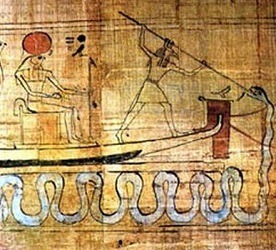
Seth protecting Ra from Apep (wikimedia commons)
From the dawn of recorded history Seth's status in Egyptian religion was ambivalent, and it continues to be a topic of heated debate among researchers what degree of popularity he enjoyed in particular very early on.
Some aspects of Seth character, like his evident interest in both men and women and whether it reflects broader Egyptian cultural norms (or if it’s merely yet another way in which Seth was an outsider among gods and men, as the author of the first monograph dealing with Seth proposed in the 1960s) are likewise a hotly debated topic.
Seth was associated with many animals, such as the hippopotamus and the crocodile, but his main symbol is the sha or “Seth animal” which is regarded as either a mystery or a fictional creation, and in Egyptian texts inhabits zones inhospitable to humans.
Seth was called “the god of confusion” by Herman Te Velde (the first writer to dedicate a monograph to him) and while this opinion has been since called into question, it is undeniable that it’s hard to form a coherent image of him.
In addition to various versions of the well known myth mentioned above there are other instances of combat between Seth and Horus (most likely initially a distinct myth combined with the narrative about Osiris’ death and resurrection at a later date) and of Seth as a menace to the established order. Some of the Pyramid Texts present even the human followers of Seth as enemies to be conquered (which is held by some researchers a mythical memory of strife between local kings before the unification of Egypt). .
However, there are also texts where Seth is a rightful member of the Ennead; where he and Horus act in harmony as protectors of the ruler; where he assists pharaohs in their resurrection in the afterlife; and even to Seth as one of the gods responsible for returning Osiris to life. A recurring motif in texts dealing with the afterlife in particular is a description of Seth offering a ladder to the dead who can reach some destination themselves. Mentuhotep II of the XI dynasty seemingly had Seth and Hathor depicted behind his throne in art; Hatshepsut described Seth positively as well.
Personal names invoking Seth are known, too; and as established by Willam Berg in his studies of a different ambivalent deity, “children are not called after spooks.”
Seth's ambiguous character made him ideal to represent The Other in Egyptian culture – the foreigners, especially these arriving from the Levant, their culture, and generally “un-Egyptian” traits. In that capacity, he functioned as an “ambassador” or “minister of foreign affairs,” to put it in modern terms. Or perhaps a foreigner in his own country, so to speak.
As a result, he came to be associated with a group of deities which, while part of the official pantheon, had their origin outside Egypt.
The Ramessides and foreign gods
Generally speaking, there were two primary sources for foreign deities incorporated into Egyptian religion: Levantine trade centers like Gebal (Byblos in Lebanon) or Ugarit (Ras Shamra in Syria); and Egypt's vassal/enemy/ally/very occasional ruler Nubia (roughly corresponding to present day Sudan).
Libyan influence was smaller, and to my knowledge there is no evidence of any major impact of Egypt's other trading partners (Punt, located near Horn of Africa, and Minoan Crete; the latter absorbed many Egyptian influences instead, though) or enemies (like the Hittites) on religion. The peculiar history of Seth is related to the the first of these areas.
Early researchers saw the “Syrian” deities as worshiped at best by slaves or mercenaries – they didn't fit neatly into the image of Egypt presented by some royal inscriptions: an unmovable, unchanging and homogeneous country, a vision as appealing to absolute rulers in the bronze age as it was to many 19th and 20th century researchers.
However, the truth was much more complex, and in fact some of the best preserved accounts of foreign cults in Egypt indicate that the process was in no small part related to the pharaohs themselves. For example Ramses II in particular was an enthusiast of Anat, as evidenced by statues he left behind:
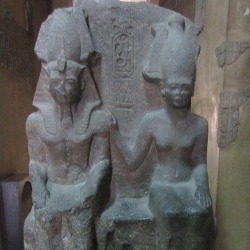
Ramses II and Anat (wikimedia commons)
He also named his daughter Bint-Anat (“daughter of Anat”) and his favorite pets and possessions bore Anat-derived names too.
Not only only Ramses II himself, but the entire XIXth dynasty – the “Ramessides” (a term also applied to the XXth dynasty) - was particularly keen on these imported deities. Curiously, one of its founders was named Seti - “man of Seth,” and Seth was seemingly the tutelary deity of his family. The well known case of Ramses II's red hair might be connected to this – this uncommon trait was associated with Seth.
As a result of the Ramessides' rise to power Seth became one of the state gods in Egypt, alongside heavyweights like Amun, Ptah or Ra. However, it's also safe to say that he was popular in everyday cult among commoners, as evidenced by finds from camps for workers partaking in various construction projects.
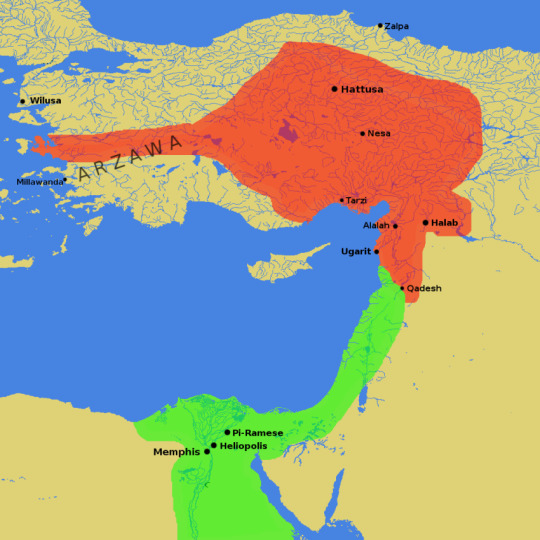
Part of Egypt of the Ramessides at its maximal extent (in green; wikimedia commons)
During the discussed period, Egypt was as the peak of its power, both military and cultural; the “other” recognized Egypt's power. Weaker states in the proximity of Egypt paid tribute, while the more distant fellow “superpowers”of the era (the Hittites and the Mitanni, rivals of Egypt in Syria and the Levant, and the more distant Kassite Babylon) bargained with Egypt for dynastic marriages, luxury goods or craftsmen. While some foreign rulers didn't necessarily get that the pharaohs might not want to play by their rules and expressed frustration with that in their letters sometimes (see a particularly funny example below), overall the relations were positive, and resulted in a lot of interchange between cultures.

(source)
The incorporation of foreign deities into Egyptian pantheon was a phenomenon distinct both from the well known practice of interpretatio graeca and from the monumental Mesopotamian god lists, and foreign gods were adopted rather selectively. Some researchers propose that the incorporated deities were often chosen because their sphere of influence wasn't covered by any native god.
For example, Astarte (more accurately Ashtart or Athtart, considering the Ugaritic orthography; however the Greek spelling is used in literature to refer to the Egyptian version and I'll stick to that) was associated with horses and chariot warfare. As the animal wasn't known in Egypt in the formative period of the state, it wasn't among the symbols of any local deity; at the same time chariots were a prominent component of the Egyptian military at the height of its power, and as such required a deity to be put in charge of it.
Six deities of broadly “Syrian” origin are usually listed among Egyptian gods in modern scholarly literature: Anat, Astarte, Resheph, Houron, Baal (the Ugaritic weather controlling one) and Qadesh. Of these, four were pretty similar to their original versions. Qadesh is a complex case as it's uncertain if such a deity existed outside Egypt – it's possible she developed as a combination of a divine title (“the holy one”) and the general Egyptian perception of foreign religion. Some scholars in the past asserted she is simply Athirat/Asherah but this interpretation relied on the false premise of Athirat forming a trinity with Anat and Ashtart and the three of them being the only prominent goddesses in cities like Ugarit.
There are also curiosities like Chaitau, a god with Egyptian name (“he who appears burning”) but attested only in sources from Levantine cities (though ones written in hieroglyphics) and in magical formulas of similar origin.
Baal is the most puzzling case: simply put, it's clear Baal was introduced to Egypt. It's clear Baal was depicted in Egyptian art. It's even clear that Egyptians knew that Anat and Astarte were deities from Baal's circle back at home, and that Baal was tied to a narrative about combat with the sea. And yet, it's not easy to say where the Egyptian reception of Baal ends and where Seth starts. Baal's name was even written with the Seth animal symbol as determinative. When exactly did this identification first occur is unknown: while it would be sensible to assume the Hyksos, a Canaanite group which settled in Egypt and briefly ruled the Nile delta, are responsible, there is some evidence which might indicate this already happened before.
Baal and Seth
Baal was a natural match for Seth: Seth represented the foreigners, Baal was the most popular god of the foreign group most keen on settling in Egypt; Baal has a somewhat unruly character in myths; both rule over storms and have a pronounced warrior character. Additionally, both of them were depicted as enemies of monstrous serpents.
Baal was identified with Seth in Egypt, but in turn Seth became more Baal-like too. So-called “Stela of year 400” depicts an entity labeled as Seth more similar in appearance to Baal due to the human face and Levantine, rather than Egyptian, garb:
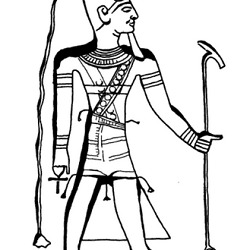
(source)
It is well known that the main myth of Baal, in Ugarit the first part of the “Baal cycle,”describes his combat with the sea, personified by the god Yam, seemingly described both as humanoid and serpentine. In Egypt, this narrative was associated with the composite Seth-Baal, and a fragmentary version is recorded in the so-called Astarte papyrus. Curiously, it was actually discovered long before the Baal cycle itself – however, it only became a subject of in depth studies in the wake of the discovery of Ugarit. There are also many similarities to the Hurrian myth “Song of the Sea,” known only from fragments, and to the Song of Hedammu from Hittite archives.
While in the Ugaritic version Baal fought the personified Sea against the wishes of the head god El, in the Egyptian version the confrontation happens because the Ennead fears Yam, who threatens to flood the earth and demands tribute, much like the Hurrian Sea.
Before Seth properly enters the scene, we learn about how Ptah and Renenutet, a harvest goddess, appeal to his associate Astarte (as already noted before viewed as Ptah's daughter in Egypt), hoping she'll act as a tribute bearer. Astarte is described as a fearsome warrior; however, she is not meant to fight Yam herself, but merely temporarily placate him. She seemingly strips down and brings offerings – this is, once again, closer to the Hurrian than Ugaritic version, where Shaushka, an “Ishtar type” goddess like Astarte, seduces the sea monster Hedammu in a similar way. It is not clear if Yam is interested, though - in fact he appears to question why Astarte isn’t dressed (possibly mocking what must’ve been a humiliating situation for a warrior deity, I’d assume).
Eventually, Seth arrives and presumably fights Yam, likely with Astarte's help - the rest of the papyrus is too poorly preserved to decipher, but as indicated by the foreign equivalents Seth and Astarte win. This is confirmed by the Hearst Medical Papyrus, imploring Seth to expel illness from the treated person just like he vanquished the personified Sea.
The Ugaritic version of the myth doesn’t include a tribute scene among surviving fragments, though it’s worth pointing out that the Ugaritic Ashtart/Astarte cheers on Baal during his battle against Yam and berates him for not acting quick enough, which is easy to interpret as hostility caused by a similar episode. Many researches assume that it existed among the lost fragments of the Baal Cycle tablets, though this is for now purely speculative.
A variant of the myth of Seth and Horus - The Contendings of Horus and Seth - presents a further curious case of Seth-Baal syncretism, this time incorporated into well established Egyptian myth rather than an imported foreign one.
Seth and Horus compete for the right to rule after Osiris' death. Ra thinks Seth is the better option to nominate as a successor because Seth killed Apophis on his behalf, but a few other of the elder gods disagree and try to delay the process by insisting to ask various deities to provide their expert opinions.
These generally favor Horus much to Ra's annoyance, but he can't go against them so he insults Horus (calling him "feeble and weak-limbed" and criticizing his hygiene) but doesn't stop his rise to power. The semi-humorous portrayal of Ra is rather unusual; in addition to showing annoyance with other gods, at one point he vanishes, and only agrees to return because Hathor lured him out.
It seems Horus' mother Isis insults Seth in response to Ra's comments. Seth, offended, refuses to partake in the divine assembly unless Isis leaves; Ra orders that and the gods gather again without her. However, Isis disguises herself and asks Seth who should inherit first, a child or a brother who can provide for himself (and is a foreigner), to which Seth replies that the former; this was a trick, obviously, and Isis holds it as proof that Seth forfeited his right to rule, which Ra accepts.
After multiple chaotic tribulations (including the [in]famous lettuce episode as well as Horus decapitating his mother because he decides she doesn't do enough) Horus is re-declared king but Ra, implored by Ptah (otherwise absent from the myth) gives Seth two wives (eg. Anat and Astarte; this solution was suggested already earlier by the gods providing the opinion; some authors question if they are meant to be Seth’s wives or merely allies, much like the relationship between Baal, Anat and Ashtart in Ugarit is considered debatable) and the storm clouds as his new domain. He is to strike fear into hearts of men, but will also get to be treated as if he were Ra's own son.
Considering the emphasis on storm and the mention of Anat and Astarte, it's pretty clear to me that Egyptians essentially invented their own Baal backstory meant to integrate the foreign tradition with their own by recasting Baal and Seth as the same entity. The text is however unusual because of its humorous tone – the gods insult each other, act ineptly and all around hardly provide an inspiring example. Perhaps the focus on Seth made this possible.
As a final note before I'll move on to times much less prosperous for Seth it's worth to mention that not only Baal but also other foreign gods were at times equated with Seth. The Libyan god Ash was conflated with him in the western oases, while treaties with the Hittites assign the name of Seth to various members of their pantheon, including the Baal-like Tarhunna (equivalent of Hurrian Teshub) but also the sun goddess of Arinna.
Demonization of Seth
While in the late bronze age Seth greatly benefited from his role as a god of foreigners, in later periods this has proven to be his undoing.
Egypt couldn't maintain its power forever, and eventually fell to the Assyrians, who showed little respect for local culture and looted Thebes. While the Assyrian domination was only temporary, it severely damaged the country, and a spiritual scapegoat was needed to reconcile the carnage with the idea that Egypt was a land chosen and protected by the gods.
The change seemingly occurred under the rule of Psamtik – in a new version of the myth of Seth and Horus, Seth not only lost decisively, but also was punished afterwards, and religious texts spoke of a “rebellion”of Seth. Seth was never associated with Ashur, the head god of the Assyrians, before, but in Egyptian imagination he was blamed for bringing the invaders under “his” command to ravage and subjugate the country. A mythical text has Isis implore Ra to punish Seth for robbing temples, much like the Assyrian armies did. Even later accounts tell various tales about Seth being punished, either gruesomely (a few texts recount massacred of towns belonging to Seth) or humorously (for example in one text Thoth makes him impotent with a spell) and exiled from among gods.
There's evidence that the worship of Seth, previously commonplace, came to be abhorred and depictions of Seth were destroyed or altered. A famous example is a Seth statue converted to look like Knhnum or Amun instead:
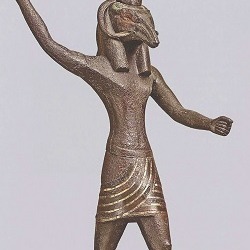
Seth no more (wikimedia commons)
A late relief from Edfu, from the Ptolemaic times, seems to indicate that even Seth's role as a guardian of the solar barge was lost: Seth, depicted as a hippopotamus, was defeated by Horus from the solar barge of Re. However, while Apep is usually depicted as huge and menacing, hippo Seth is tiny and pathetic.
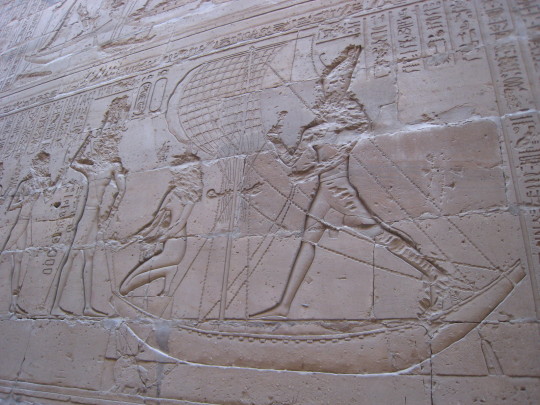
Seth as a tiny hippo representing the forces of chaos (wikimedia commons)
Curiously, despite the official policies, which continued under Ptolemaic rule, it seems that until the 2nd century CE, Seth continued to be popular in the Dahkleh oasis, possibly even serving as the main deity there. Sadly due to lack of research I am unable to provide any more detailed information about that.
Closing remarks
Even further demonization of Seth is evident in the fact that the Greeks and Romans referred to Seth as Typhon, leaving no room for ambiguity of interpretation. As the Greek accounts of the late version of Seth were all that was known for centuries due to ability to read hieroglyphic writing vanishing with the advent of new religions, it remains dominant in media today.
Perhaps it would be beneficial to leave some room for the serpent-slaying hero Seth hanging out with foreign deities in modern works, though? Surely his peculiar outsider status is even more appealing to modern readers than it was to the public of the Ramesside period.
Bibliography
N. Ayali-Darshan, The Other Version of the Story of the Storm-god’s Combat with the Sea in the Light of Egyptian, Ugaritic, and Hurro-Hittite Texts
G. Beckman, Foreigners in the Ancient Near East
M. Dijkstra, Ishtar seduces the Sea-serpent. A New Join in the Epic of Hedammu (KUB 36, 56+95) and its meaning for the battle between Baal and Yam in Ugaritic Tradition
T. J. Lewis, ʿAthtartu’s Incantations and the Use of Divine Names as Weapons
D. Schorsch and M. T. Wypyski, Seth, "Figure of Mystery"
D. T. Sugimoto (ed.), Transformation of a Goddess. Ishtar – Astarte – Aphrodite - especially the chapters ‘Athtart in Late Bronze Age Syrian Texts by M. S. Smith and Astarte in New Kingdom Egypt: Reconsideration of Her Role and Function by K. Tazawa
H. Te Velde, Seth, God of Confusion: A Study of His Role in Egyptian Mythology and Religion
P. J. Turner, Seth - a misrepresented god in the Ancient Egyptian pantheon? (PhD thesis)
C. Zivie-Coche, Foreign Deities in Egypt
120 notes
·
View notes
Text

funny little button for when you like my stuff on twitter hehe
1 note
·
View note